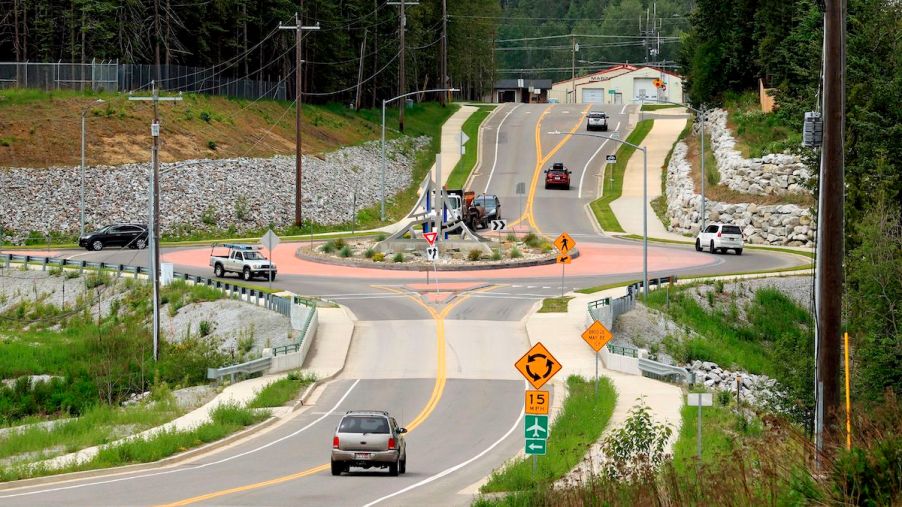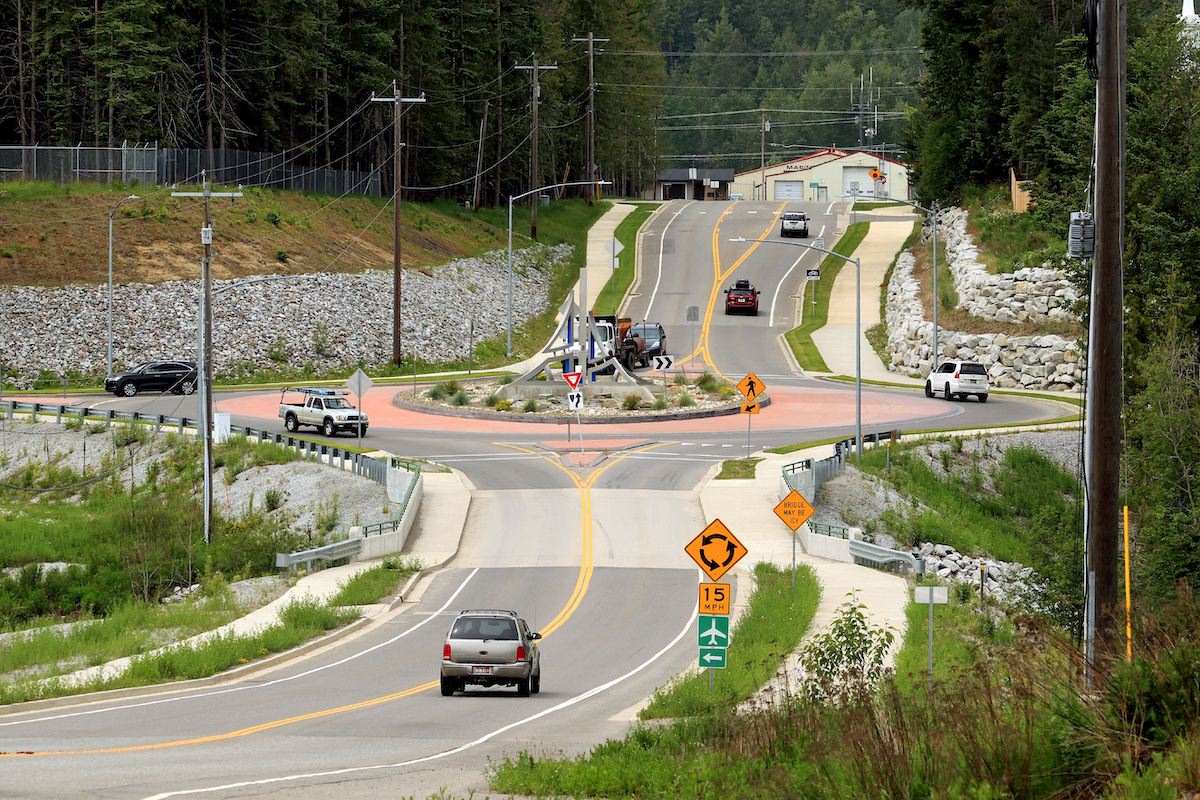
Roundabout and Traffic Circle Rules You Should Never Break
Driving through roundabouts and traffic circles can be confusing if you’re unfamiliar with them. Motorists must obey the rules of these circular intersections to ensure pedestrian and car safety. Here are some of the most crucial roundabout and traffic circle rules you should never break.
What are roundabouts and traffic circles?

A roundabout is a small circular intersection with few or no signals where drivers yield to traffic in the circle. On the other hand, a traffic circle is similar to a roundabout but has more complex crossing points and often includes traffic signals, according to the Washington State Department of Transportation.
A traffic circle is a more prominent intersection but follows the same general rules as a roundabout. Vehicles entering a traffic circle must yield to cars already in the process. If a vehicle is so large that it doesn’t fit within the circular pattern, it will probably cross several lanes of traffic. Drivers new to these areas often assume that one lane equals one direction of travel and accidentally cut in front of oncoming cars.
Roundabout and traffic circle rules to remember
One of the most important things you can do to ensure a safe and efficient trip through a roundabout or traffic circle is to follow the rules. Here are a few guidelines:
- Enter the intersection only when your vehicle is within the designated lane. Drivers who try to cut in front of oncoming cars in the circle could get a ticket. Also, if a vehicle is so large that it doesn’t fit within the circular pattern, it might cross several lanes of traffic at once, so drivers should proceed with extra caution.
- Drivers should approach roundabouts or traffic circles properly and cautiously.
- Turning vehicles should yield to cars traveling straight through the intersection.
- Drivers should remain prepared to stop at roundabouts or traffic circles.
- Maintain a constant speed around the traffic circle or roundabout, and strive to keep an open line of sight with other nearby drivers.
- If a collision occurs, remain in your vehicle until emergency personnel arrives unless you’re injured or your car is on fire, in which case you should exit your vehicle as soon as it is safe to do so.
- Wait for all other cars within the intersection before making a left turn. And remember, you can make left turns only from the lane designated for left turns.
Similarities and differences between the 2 types of circular intersection
Similarities
- Traffic entering a roundabout must yield to vehicles already in the intersection. Likewise, vehicles entering a traffic circle must yield to oncoming traffic and cars in the corner (in addition to those already in the loop).
- Drivers new to circular intersections might accidentally cut in front of oncoming vehicles.
- Roundabouts and traffic circles are more common in busier areas where traffic volumes exceed capacity on streets.
Differences
- Roundabouts have limited access points and smaller diameters. Traffic circles have larger diameters with multiple lanes.
- A roundabout generally consists of a single circular loop, while a traffic circle has multiple loops.
- Roundabouts tend to have fewer or no traffic signals or stop signs, while traffic circles typically have multiple.
- Roundabouts are usually found in rural and suburban areas, while traffic circles are typically in urban areas.
- Roundabouts might have unique lane markings for “zipper” lanes for drivers to enter the intersection from multiple directions. Traffic circles often have zigzag lane markings.


